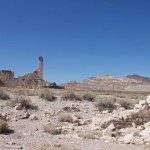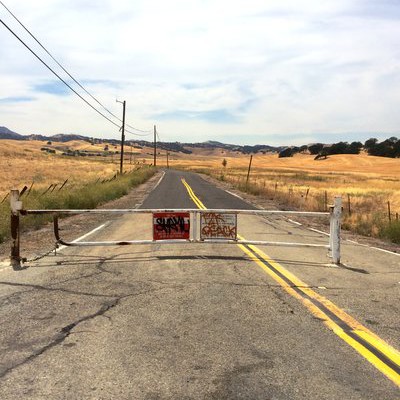Calico ghost town may be nothing more than an abandoned plot of land—now revamped to give visitors a look at what life was like during the Gold Rush—but it was once a prosperous old West mining town that produced over $86 million in silver, $45 million in borax, and featured 500 mines during its prime. But when silver lost its value in the mid-1890’s the town also lost its population. Miners’ packed their belongings, loaded their mules, and moved away leaving behind a ghost town. Now, you too can explore this famous piece of history conveniently located a few miles off I-15.

On a long drive through the desert on your way to Las Vegas or back to southern California, Calico Ghost Town is a quick stop off the busy interstate. Signs appear in the distance begging you to come check out this piece of California history—still largely in tact and safe to explore. From the highway exit, simply follow the road ahead to arrive at Calico Ghost Town, which will soon become apparent when you see the large white letters in the mountains that spell out the town’s name in the distance.

Visiting Calico comes at a fee. At the time of this posting, the cost to visit Calico is:
- Adults – $8
- Youth (6-15) – $5
- Children (Under 5) – Free

Heading straight past the fee gate will take you to Calico Ghost Town. The town itself is quite impressively large and plenty of history has been left behind. There are many representations of what life might have been like over a century ago, although there are some major indications of the revamping of this town (the Starbucks for example). While this town has been slightly modernized, it is still easy to appreciate the other aspects that differentiate it from any other town you’ve visited.

Some cool spots to check out include:
Calico Bottle House
A house completely made of bottles and a fantastic place to take photographs. The house was constructed in the 1950’s and is made out of over 5,000 bottles.Today it sells dog supplies.

View from the Top
At the end of the town you can walk up a worn path which gives you a panoramic view of the entire town. Here you can see the railroad below, the Calico cemetery in the distance, and of course, the town itself.


School House
This old historic school house is not only a great place to capture some amazing photos but it is also a truly unique structure. The original school house was built in 1885, however, this new structure was built in the early 1950’s. Old photographers were used for accuracy and to follow the architecture as closely as possible, however this replica is about one-third less than the size of the original.

Calico Cemetery
The cemetery requires a very short drive out of the town’s parking lot and veering to the right at the bottom of the hill. The last school mistress in Calico, Margaret Olivier , who passed away in 1932, was buried here. It is also said that ghosts also inhabit this cemetery. The ghost of Dorsey, the “mail carrying dog”, has reportedly appeared as a shadow-like apparition at the cemetery and near the Print Shop that stands near the original location of the post office.




Maggie’s Mine
Maggie’s Mine was a working silver mine in the 1880s and it is now the only mine in Calico Ghost Town that is safe enough to explore. Here you can take a guided tour, hear the history of the mine, and learn how the miners worked in the local Calico mountains. Admission at the time of this post was $2 and worth the experience.

History of Calico Ghost Town
In 1881 four prospectors were leaving Grapevine Station, now better known as Barstow, for a mountain peak to the northeast. The peak was described as “calico-colored” and the town and the peak were later called Calico. The four prospectors discovered Silver in the mountain, and opened the Silver King Mine, what would become California’s largest silver producer in the mid-1880’s. At one time the town supported a post office, three hotels, five general stoes, a meat market, bars, brothels, boarding houses, and three restaurants. The county established a school district and a voting precinct due to its growth. At its height of silver production during 1883 and 1885, Calico was home to over 1,200 people.

Despite dying out in the mid-1890’s, an attempt to revive Calico was made in about 1915, when a cyanide plant was built to recover silver from the unprocessed Silver King Mine’s deposits. This attempt was unsuccessful, however in 2012 Calico became the first ghost town in America to be re-opened for residential purposes. 100m from the ghost town site, six luxury villas were built with a trading value of $4.5 billion.

In the 1950’s Walter Knott, founder of the infamous Knott’s Berry Farm, purchased Calico Ghost Town and restored all but the five original buildings to look as they did in the 1880’s. Knott donated the town to San Bernardino County in 1996. Calico has since received State Historical Landmark 782 and in 2005 then Governor Arnold Schwarzenegger declared Calico to be California’s Silver Rush Ghost Town.

Today the park holds mine tours, gunfight stunt shows, gold panning, and a ride on the Calico & Odessa Railroad. It also features a number of gift shops, several restaurants, and even a spot to grab a sweet treat. Overnight camping is also available for those that want to further take part in a blast from the past.

Overall Review
I’d recommend the stop to Calico Ghost Town at least once for anyone making the long, arduous drive from southern California to Las Vegas. Not only is it a welcomed break, it is also pretty fascinating and you could easily spend half a day here learning, exploring, and taking in all of the unique sights. Don’t forget to also check out the Calico Cemetery during your visit!
Address : 36600 Ghost Town Road, Yermo, CA 92398







